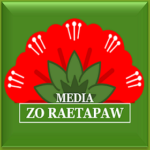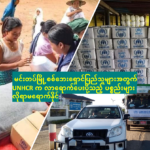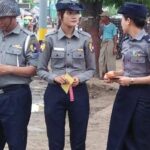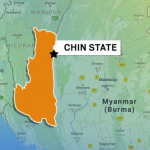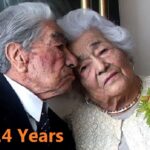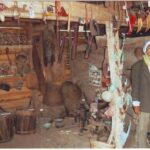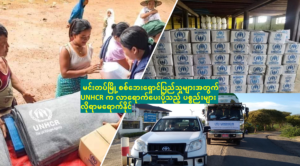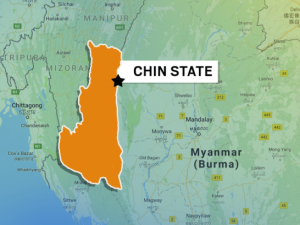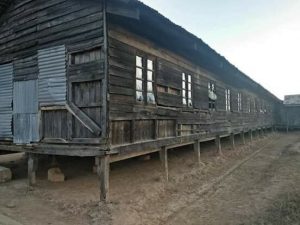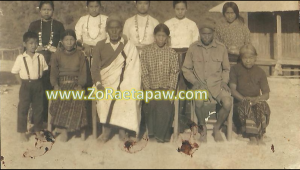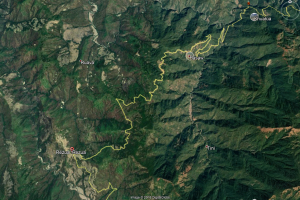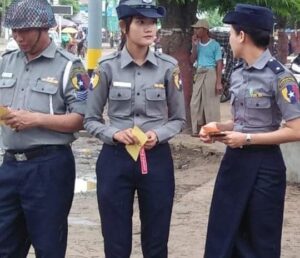
Zo Miphun of Haka
Thanks to the Zo Miphun (Zo tribes) of Haka, consisting of various sub-tribes spreading over Haka, Thantlang and Matupi, who, in spire of their dialectal differences, tenaciously hold on to Zo, as their collective name. Pu Ngai Thang and Pu Tha Vung, both respected historians of Haka, published the 2009 Zo Miphun Calender on which they deliberately illustrated Zotung, Zophei, Mara, Lautu, and Senthang as the Zo people who lived in Haka, Thantlang, Matupi and as far as Paletwa subdivisions. Zo miphun boasts the vast majority of population (over 80%) in Haka and Thantlang.
The leading exponent of Zo in the Haka area, Pu Ngai Thang is a respected historian without faltering commitment to unearth all there is in history about Zo tribes (Zo Miphun) which was left more and more convert seemingly on purpose by the learned individuals before him for some unexplained reason. A man with the courage to call a spade a spade, Pu Ngai Thang, is also an outspoken investigator whose work is no mean historians feat in Haka area, is the hop of restoring Haka Zo history back on open records.
It will not be forgotten that whom Prof Lehman, Rundall, Tuck & Carey, H N C Stevenson and other scholars discovered to be Zo people actually were the majority of people in Haka scattered wide over neighboring areas. Lehman was a tireless investigator who spoke the dialect of Haka and better still, mastered the Hletlawng dialect. A Professor of Anthropology and Linguistics, University of Illinois (USA), he was the prime authority on this matter. He said they were not Chin but Zo.
Asho, The Zo, The Plain Chins
The history and culture of the so called Plain Chin, Asho remain rather sketchy compered to that of their hill cousins. However, notwithstanding the paucity of historical evidence indicating the Plain Chins calling themselves Zo, testimonies so far gamered from noted scholars among them are no less convincingly supportive that they are Zo indeed.
Accordingly, Sayagyi U Ba Thaung Tin, an Asho Zomi, who was once most respected TEO of Yangon Division, Myanmar stated, “Even though some of those who called themselves Laimi unfoundedly do not want to accept, our national name, in fact, is ‘Zo’ since time immemorial” MK Khup, Canada in 2010, courtesy; Mary Way, UBTTs daughter, May 2017.
Sayagyi Salai U Tun Hlaing, SEO of Chin State, also another well-known educator of Asho Zomi, defined, “Asho, in fact is Zo, with the prefix ‘A’ having no meaning exactly like definite article, ‘the’ in English”. He totally agrees with Prof. Lehman that Asho is Zo.
Furthermore,it is worthwhile to note that the Asho, Zomi, Plain Chins, have clan names like Seile Zo, Pansai Zo, Panglan Zo and Nankaing Zo. All these names, down through the centuries, are enduring testaments to the fact that they, are Zo people (Zomi)
Prof Lehman, wrote “The Plain Chin do not recognise the applicability of ‘Chin’ to themselves, being Asho, an obvious cognate of Zo” . Chin National Journal P 96.
Mindat and Kanpetlet Cho/Zo
After properly studying their culture and language, linguists established the term Cho is cognate of Zo. I have no much information on this matter but the fact that Cho is phonetically similar to Zo gives me great confidence when I asked six members of Dundas Valley Faith Baptist Church with various national backgrounds to write as they heard what I uttered. I pronounced to them, “Zo”. Once wrote Jo, another wrote Shjo, two of them wrote Zo and the remaining two did write Cho. This assured me with considerable relief that Cho is cognate with Zo.
Paletwa Khumi/Zomi
Taking note that Cho is Zo, the phonetic similarity of Khu and Cho strongly recommends that Khu is Zo and therefore Khumi is perfectly congruent with Zomi.
The Naga Zo
The Aochungli, are referring themselves as Ozo. Grierson LSI. Here again , the prefix ‘O’ has no specific meaning like ‘A’ in the case of Asho and therefore, Ozo is Zo.
This Article Received From, and Credit to: Dr.J. Suan Za Dong, Sydney, Australia
